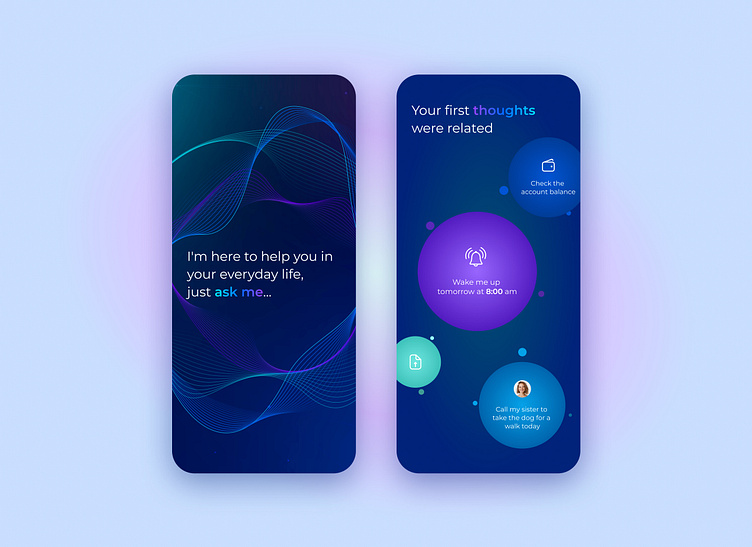
Building Autonomous AI Agents with Anthropic’s Claude 4.5 Sonnet and the New Agent SDK
The Dawn of a New Era: Building Intelligent Agents with Claude 4.5 Sonnet
The artificial intelligence landscape is in a constant state of rapid evolution, with breakthroughs announced so frequently it can be challenging to keep pace. Recent Anthropic News has once again captured the community’s attention, signaling a significant shift from conversational chatbots to sophisticated, autonomous AI agents. The introduction of Claude 4.5 Sonnet, a highly capable and cost-effective model, alongside the new Claude Agent SDK, provides developers with a powerful, integrated toolkit to build applications that can reason, plan, and act. This isn’t just an incremental update; it’s a foundational step towards creating AI systems that can operate complex software, perform multi-step tasks, and interact with the digital world on a user’s behalf. This move places Anthropic in direct competition with advancements seen in OpenAI News and Google DeepMind News, pushing the entire field towards more dynamic and functional AI.
In this comprehensive technical guide, we will dive deep into the capabilities of Claude 4.5 Sonnet and the Agent SDK. We’ll explore the core concepts, walk through practical code examples for building your first agent, discuss advanced techniques like multi-tool orchestration and vision-powered UI automation, and cover best practices for creating robust, secure, and efficient AI agents. Whether you’re a seasoned AI developer or just starting, this article will provide you with the actionable insights needed to harness these cutting-edge tools.
Core Concepts: The Engine and the Toolkit
To build effective AI agents, you need two key components: a powerful reasoning engine (the model) and a robust framework for connecting that engine to the outside world (the SDK). Anthropic’s latest releases provide exactly that, creating a synergistic combination for developers.
Claude 4.5 Sonnet: The Intelligent Workhorse
Claude 4.5 Sonnet is positioned as a “workhorse” model, striking an impressive balance between high intelligence and speed, making it ideal for the iterative nature of agentic workflows. It boasts state-of-the-art performance in coding, logical reasoning, and, crucially, tool use. Its ability to accurately interpret and execute functions defined in code is the bedrock of its agentic capabilities. Furthermore, its new vision capabilities allow it to understand and interpret screenshots, diagrams, and user interfaces, opening up a new frontier for UI automation and visual data processing. This multimodal capability is a key trend also seen in recent Meta AI News and is becoming a standard for flagship models.
The Claude Agent SDK: Orchestrating Action
While a powerful model is essential, it’s the SDK that truly unlocks its potential to act. The Claude Agent SDK is designed to streamline the development of tool-using agents. It simplifies the process of defining tools, managing the conversation flow, and handling the back-and-forth between the model’s reasoning and the execution of external functions. This is a significant development, echoing the patterns established by popular frameworks covered in LangChain News and LlamaIndex News, but with native integration for the Claude ecosystem.
Let’s start with a basic example. Here’s how you can define a simple tool using the new SDK to get the current stock price for a given ticker symbol.

import anthropic
import os
# It's best practice to use environment variables for API keys
# Ensure you have set ANTHROPIC_API_KEY in your environment
client = anthropic.Anthropic()
# 1. Define the tool's function
def get_stock_price(ticker_symbol: str) -> float:
"""
Gets the current stock price for a given ticker symbol.
For this example, we'll return a mock price.
In a real application, this would call a financial API.
"""
print(f"---> Tool executed: get_stock_price(ticker_symbol='{ticker_symbol}')")
if ticker_symbol.upper() == "GOOGL":
return 178.54
elif ticker_symbol.upper() == "AAPL":
return 214.29
else:
return 99.99 # A default mock price
# 2. Define the tool's specification for the model
tools = [
{
"name": "get_stock_price",
"description": "Fetches the current market price of a specific stock using its ticker symbol.",
"input_schema": {
"type": "object",
"properties": {
"ticker_symbol": {
"type": "string",
"description": "The stock ticker symbol, e.g., 'AAPL' or 'GOOGL'."
}
},
"required": ["ticker_symbol"]
}
}
]
print("Tool specification is ready.")
# We will use this 'tools' list in the next section to build the agent loop.This snippet demonstrates the two essential parts of tool definition: the actual Python function that performs the action and the JSON schema that describes the tool to the model. This clear separation of logic and description is crucial for the model to understand when and how to use your tools effectively.
Building Your First Claude-Powered Agent
With the core components understood, let’s build a complete agentic loop. This loop involves sending a user request to the model, letting the model decide if a tool is needed, executing that tool if requested, and then sending the results back to the model for a final, synthesized answer.
Setting Up the Agentic Loop
The process, often referred to as a ReAct (Reason and Act) loop, is the fundamental pattern for most AI agents. The model reasons about the user’s request and decides on an action (calling a tool). We then execute that action and feed the result back, allowing the model to reason again and produce the final response.
The following code builds upon our previous example to create a functional agent that can answer questions about stock prices.
import anthropic
import os
import json
# --- Previous setup from Section 1 ---
client = anthropic.Anthropic()
def get_stock_price(ticker_symbol: str) -> float:
"""
Gets the current stock price for a given ticker symbol.
For this example, we'll return a mock price.
"""
print(f"---> Tool executed: get_stock_price(ticker_symbol='{ticker_symbol}')")
if ticker_symbol.upper() == "GOOGL":
return 178.54
elif ticker_symbol.upper() == "AAPL":
return 214.29
else:
return 99.99
tools = [
{
"name": "get_stock_price",
"description": "Fetches the current market price of a specific stock using its ticker symbol.",
"input_schema": {
"type": "object",
"properties": {
"ticker_symbol": {
"type": "string",
"description": "The stock ticker symbol, e.g., 'AAPL' or 'GOOGL'."
}
},
"required": ["ticker_symbol"]
}
}
]
# --- End of previous setup ---
def run_agent_conversation(user_prompt: str):
"""Runs a full agentic loop for a user prompt."""
print(f"\nUser: {user_prompt}")
messages = [{"role": "user", "content": user_prompt}]
# Initial call to the model
response = client.messages.create(
model="claude-3-5-sonnet-20240620",
max_tokens=1024,
messages=messages,
tools=tools,
tool_choice={"type": "auto"}
)
# Add the assistant's response to the message history
messages.append({"role": "assistant", "content": response.content})
# Check if the model wants to use a tool
while response.stop_reason == "tool_use":
tool_calls = [block for block in response.content if block.type == "tool_use"]
tool_results = []
for tool_call in tool_calls:
tool_name = tool_call.name
tool_input = tool_call.input
tool_use_id = tool_call.id
if tool_name == "get_stock_price":
# Call the actual Python function
result = get_stock_price(**tool_input)
# Format the result for the model
tool_results.append({
"type": "tool_result",
"tool_use_id": tool_use_id,
"content": str(result)
})
# Append the tool results to the message history
messages.append({"role": "user", "content": tool_results})
# Make a second call to the model with the tool results
response = client.messages.create(
model="claude-3-5-sonnet-20240620",
max_tokens=1024,
messages=messages,
tools=tools,
tool_choice={"type": "auto"}
)
messages.append({"role": "assistant", "content": response.content})
# Print the final response from the model
final_response = [block.text for block in response.content if block.type == "text"]
print(f"Claude: {''.join(final_response)}")
# Run the agent with a specific prompt
run_agent_conversation("What is the current price of Google's stock?")
run_agent_conversation("How much is a share of Apple?")
This example showcases the complete flow. The model correctly identifies the intent, determines that the `get_stock_price` tool is needed, and forms a valid call to it. Our code executes the function, captures the output, and sends it back. Finally, the model uses this new information to formulate a natural language answer for the user. This kind of integration is becoming easier across platforms like Amazon Bedrock News and Vertex AI News, which often provide managed environments for these models.
Advanced Techniques: Vision and Multi-Tool Workflows
Simple, single-tool agents are powerful, but the real world is complex. Advanced agents need to handle tasks that require multiple tools or interpret visual information. Claude 4.5 Sonnet and the Agent SDK are designed to handle these scenarios.
Leveraging Vision for UI Interaction
One of the most exciting features of Claude 4.5 Sonnet is its powerful vision capability. An agent can now be given a screenshot of a user interface and be asked to perform a task. This is a game-changer for creating automation agents that can interact with graphical interfaces, a task that was previously incredibly brittle and difficult.

Imagine you want to build an agent that can help users fill out a web form. You can give the model a screenshot of the form and ask it to generate the necessary actions.
import anthropic
import base64
import os
client = anthropic.Anthropic()
# Helper function to encode the image
def get_image_media_type(image_path):
"""Gets the media type for an image based on its extension."""
extension = os.path.splitext(image_path)[1].lower()
if extension == ".jpg" or extension == ".jpeg":
return "image/jpeg"
elif extension == ".png":
return "image/png"
elif extension == ".gif":
return "image/gif"
elif extension == ".webp":
return "image/webp"
else:
raise ValueError(f"Unsupported image format: {extension}")
def encode_image_to_base64(image_path):
"""Encodes an image file to a base64 string."""
with open(image_path, "rb") as image_file:
return base64.b64encode(image_file.read()).decode('utf-8')
# --- Main Vision Agent Logic ---
# Assume we have a screenshot of a simple contact form named 'contact_form.png'
image_path = "contact_form.png"
# You would need to have an actual image file with this name in the same directory.
if not os.path.exists(image_path):
print(f"Error: Image file not found at '{image_path}'. Please provide a screenshot of a web form.")
else:
base64_image = encode_image_to_base64(image_path)
image_media_type = get_image_media_type(image_path)
prompt = """
Based on the provided screenshot of this web form, please identify the input fields
(First Name, Last Name, Email) and tell me what actions to take to fill them out
with the following data: John, Doe, john.doe@email.com.
Describe the actions as a sequence of steps, like '1. Find the input with label "First Name" and type "John".'
"""
response = client.messages.create(
model="claude-3-5-sonnet-20240620",
max_tokens=1024,
messages=[
{
"role": "user",
"content": [
{
"type": "image",
"source": {
"type": "base64",
"media_type": image_media_type,
"data": base64_image,
},
},
{
"type": "text",
"text": prompt
}
],
}
],
)
print("--- Vision Agent Response ---")
print(response.content[0].text)
The model’s response would be a step-by-step guide on how to interact with the UI elements it “sees” in the image. This textual output could then be parsed and fed into an automation library like Selenium or Playwright to execute the actions in a web browser. This bridges the gap between language understanding and GUI interaction, a topic of great interest in the Hugging Face News community.
Best Practices and Deployment Considerations
Building powerful agents comes with responsibility. As you move from development to production, it’s critical to consider security, efficiency, and maintainability.
Prompt Engineering and Tool Design
- Be Specific: The descriptions and input schemas for your tools are your primary way of communicating with the model. Be as clear and unambiguous as possible. Good docstrings in your code translate to good descriptions for the model.
- Provide Examples: In your system prompt, you can provide few-shot examples of how to use tools in combination to solve complex tasks. This helps guide the model’s reasoning process.
- Keep Tools Atomic: Design tools that perform one specific task well. It’s better to have several simple, composable tools than one monolithic tool that tries to do everything. This is a core principle discussed in many MLOps circles, including those following MLflow News and Weights & Biases News.
Security and Guardrails

Letting an AI execute code or interact with APIs is inherently risky. Always implement robust safety measures.
- User Confirmation: For any action that is destructive or has real-world consequences (e.g., sending an email, deleting a file, making a purchase), always require explicit user confirmation before execution.
- Sandboxing: If your agent needs to execute code, run it in a sandboxed environment (like a Docker container) with restricted permissions to prevent it from accessing sensitive parts of your system.
- Rate Limiting and Cost Control: Agentic loops can sometimes get stuck or consume a large number of tokens. Implement circuit breakers, rate limits, and monitoring to prevent runaway API usage and control costs. Tools like LangSmith are becoming invaluable for tracing and debugging these complex interactions.
Deployment and the Broader Ecosystem
Once your agent is ready, you’ll need to deploy it. A common pattern is to wrap your agent’s logic in a web server using a framework like FastAPI or Flask. This API can then be integrated into your applications. For hosting, platforms like AWS SageMaker, Azure Machine Learning, and Google’s Vertex AI provide scalable, managed infrastructure for deploying AI models and applications, often with direct integrations for models like Claude.
Conclusion: The Future is Agentic
The release of Claude 4.5 Sonnet and the Claude Agent SDK is more than just another model update; it’s a clear signal of where the industry is heading. We are moving beyond simple text generation and into a world of AI-powered agents that can act as true assistants, automating complex digital tasks and integrating seamlessly with our existing software. The combination of a highly capable reasoning engine with first-class vision capabilities and a developer-friendly SDK lowers the barrier to entry for building these sophisticated systems.
The key takeaways for developers are clear: start thinking in terms of tools and actions, not just prompts and responses. Prioritize clear tool design, implement robust security guardrails, and leverage the powerful new vision capabilities to create novel user experiences. By embracing these new tools and methodologies, you can begin building the next generation of intelligent applications today.



